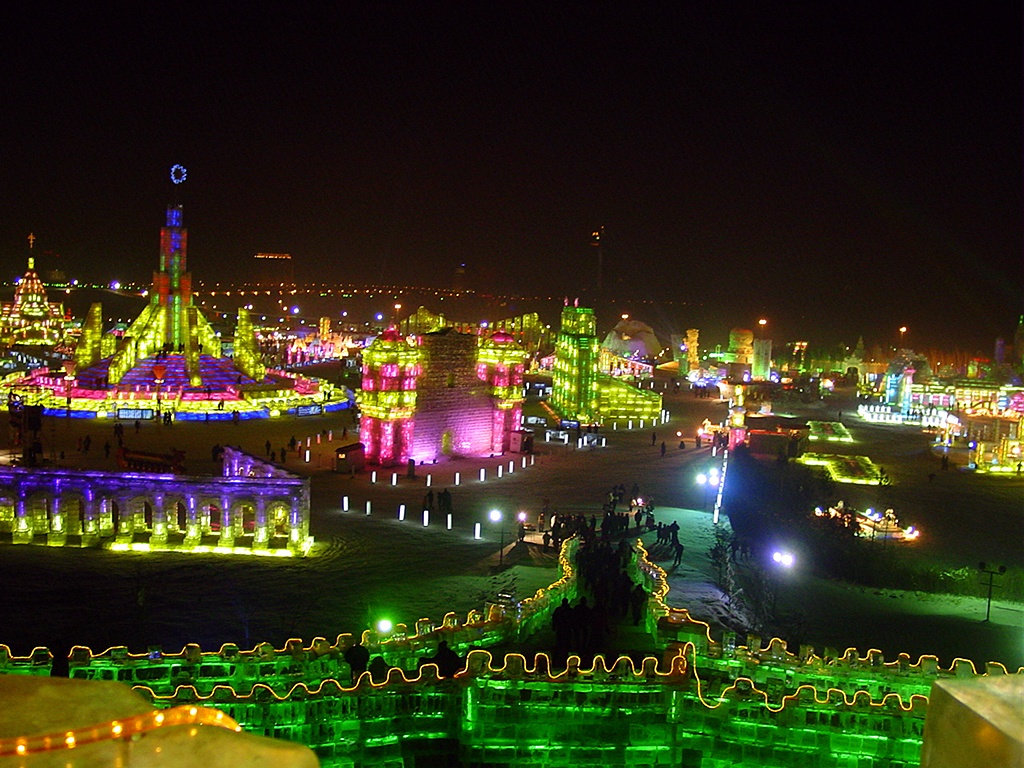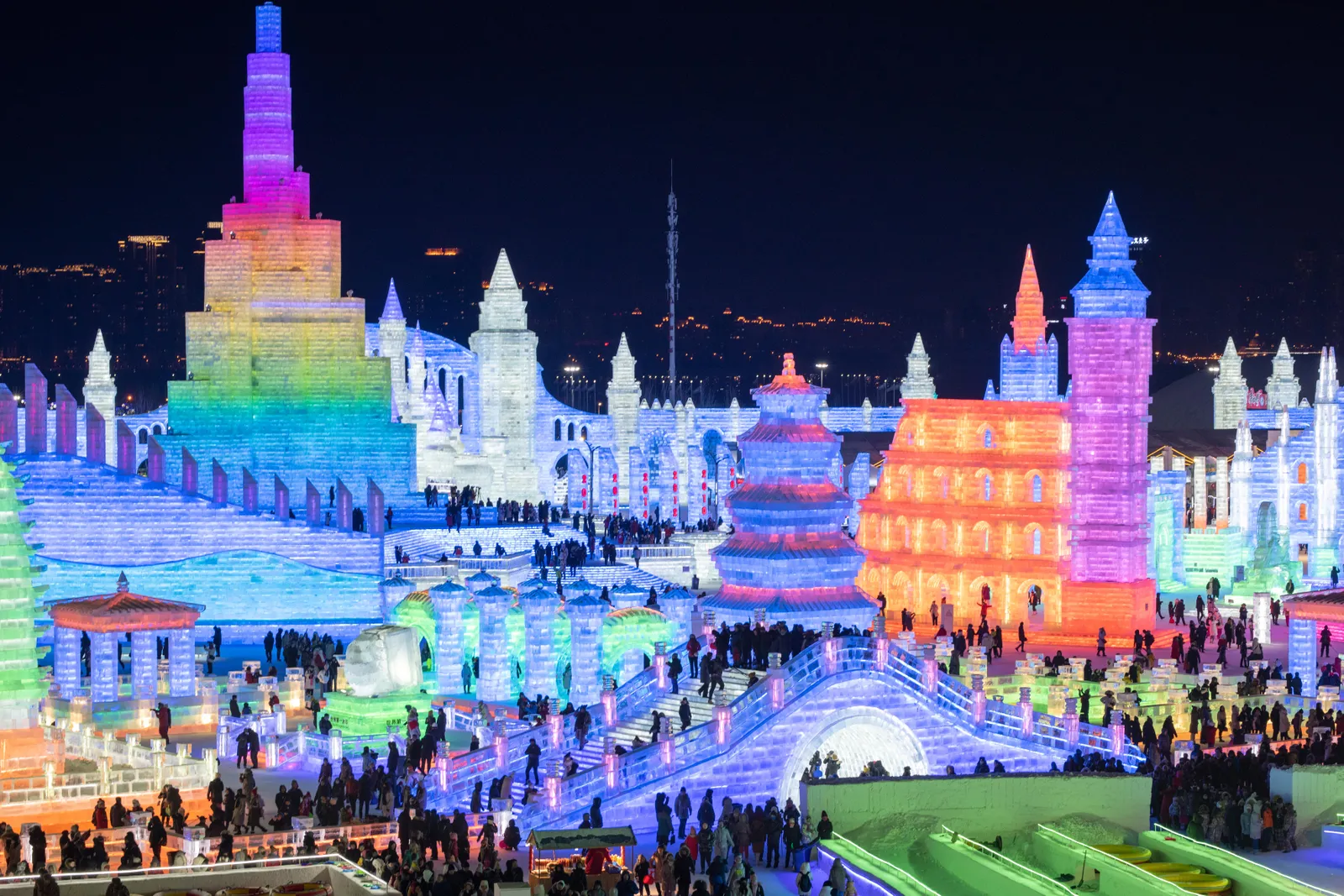Exploring Harbin’s Ice Festival and Russian-Influenced History
Welcome to the magical world of Harbin, a city in northeastern China that transforms into a winter wonderland every year. If you’re a traveler eager to dive into Harbin Ice Festival History, or someone fascinated by Harbin cultural events and China Russian heritage, this guide is for you. Harbin’s iconic Ice and Snow Festival not only showcases stunning ice sculptures but also reflects the city’s rich tapestry of Cultural attractions Harbin and Harbin travel guide essentials, blending Chinese traditions with Russian influences. Here at jusha.travel, we love sharing tips to make your China journey unforgettable, and this post will help you uncover the frozen marvels and historical depths of Harbin. Additionally, for more on China’s diverse historical sites, check out other iconic attractions.

The Magic of the Harbin Ice Festival: A Historical Overview
Harbin’s Ice Festival is more than just a seasonal spectacle—it’s a living tribute to Harbin Ice Festival History, evolving from humble beginnings into one of the world’s largest winter events. Originating in 1963 with traditional ice lantern shows in Zhaolin Park, the festival was paused during the Cultural Revolution but relaunched in 1985 as an official annual event. By 2001, it merged with the Heilongjiang International Ski Festival, solidifying its status as the Harbin International Ice and Snow Sculpture Festival (for more on its origins and milestones, see [Harbin International Ice and Snow Sculpture Festival](https://en.wikipedia.org/wiki/Harbin_International_Ice_and_Snow_Sculpture_Festival)). This event embodies Harbin cultural events, drawing artists from around the globe to create massive sculptures from river ice. A standout moment was in 2007, when a Canadian-themed installation set a Guinness World Record for the largest snow sculpture—250 meters long and 8.5 meters high, honoring figures like Dr. Norman Bethune. For more insights into China’s cultural evolution, explore other cultural celebrations. The festival typically runs from early January to March, with the 41st edition scheduled for January 5 to March 2025, according to reliable sources like [Harbin Ice Festival: 2025 Dates & Highlights](https://www.travelchinaguide.com/attraction/heilongjiang/harbin/ice_snow.htm).
As you wander through the illuminated displays, you’ll gain insights into China Russian heritage, as Harbin’s frosty art forms echo the city’s early 20th-century exchanges with Russia. For culture enthusiasts, this is a chance to see how local traditions have grown into a global phenomenon, blending Chinese ingenuity with international flair. If you’re planning a trip, keep in mind that Harbin’s harsh winters make the festival possible, turning the Songhua River into a canvas of ice. Delve deeper into China’s historical journeys with related historical routes.

Discovering the Venues: A Guide to Harbin’s Winter Wonders
When visiting Harbin, exploring the festival’s main venues is essential for any Harbin travel guide. Each site offers a unique lens into Cultural attractions Harbin, from interactive ice structures to family-friendly activities, all while highlighting the city’s blend of Chinese and Russian elements. For those interested in more travel guides, explore iconic destinations.
Start at Ice and Snow World, the festival’s crown jewel, spanning hundreds of thousands of square meters with enormous illuminated ice buildings. Nighttime visits are a must, as colorful lights transform the sculptures into a dazzling display—perfect for capturing Instagram-worthy photos. For detailed planning, check out [10 Reasons to Visit Harbin’s Ice Festival](https://www.greatrail.com/the-journey-blog/2017/march/top-10-reasons-to-visit-the-harbin-ice-festival/), which emphasizes how this venue’s evening allure ties into Harbin’s reputation as China’s original and largest ice art festival.
Next, head to Sun Island for the International Snow Sculpture Art Expo, where artists from around the world craft massive snow masterpieces. Best visited during the day (ideally 8 a.m. to 4 p.m., allocating 2–3 hours), this spot showcases intricate designs that reflect China history travel themes, often incorporating elements of Russian influence. It’s a great way to appreciate the festival’s international scale and cultural exchanges. Discover more about China’s historical themes in ancient towns.
Don’t miss Zhaolin Park’s Ice Lantern Garden Party, a more intimate and family-oriented venue featuring around 300 ice lanterns crafted by students. With slides and activities for kids, it’s an accessible introduction to Harbin Ice Festival History, located in the city center near Russian-era architecture. As [Harbin Ice Festival: 2025 Dates & Highlights](https://www.travelchinaguide.com/attraction/heilongjiang/harbin/ice_snow.htm) notes, entry is often free, making it ideal for budget travelers. These venues not only provide entertainment but also offer practical tips, like dressing in layers to combat Harbin’s frigid temperatures, ensuring a comfortable experience amid the cultural immersion.

Harbin’s Russian Heritage: Weaving History into Modern Adventures
Harbin’s allure goes beyond ice and snow; it’s deeply rooted in China Russian heritage, a fascinating chapter of China history travel that adds layers to your festival experience. In the early 20th century, waves of Russian migrants fleeing political turmoil settled here, leaving an indelible mark on the city’s architecture, cuisine, and daily life. For more on China’s diverse historical chapters, see other historical explorations.
A prime example is the Russian Orthodox Church of St. Sophia, with its iconic domes standing as a testament to this cultural fusion. Today, it serves as a museum showcasing Harbin’s multicultural past, where you can explore exhibits on Russian migration and its influence on local customs. As detailed in [10 Reasons to Visit Harbin’s Ice Festival](https://www.greatrail.com/the-journey-blog/2017/march/top-10-reasons-to-visit-the-harbin-ice-festival/), the church’s exterior contrasts beautifully with the festival’s ice sculptures, symbolizing how Harbin cultural events have evolved from these historical roots.
Wander the streets near Zhaolin Park to spot synagogues and European-style facades, remnants of Harbin’s role as a multiethnic hub. This blend of influences extends to the city’s food scene, where you can savor Russian-inspired dishes like borscht or blinis at local cafés—perfect for warming up after a day at the festival. Cultural attractions Harbin like these provide a deeper understanding of how Russian traditions have intertwined with Chinese culture, making Harbin a unique destination for history buffs.
For practical insights, pair your festival visit with a stop at these sites. According to [Harbin Ice and Snow Festival China](https://www.responsiblevacation.com/vacations/festivals/travel-guide/harbin-ice-and-snow-festival-china), attending events like snow sculpture competitions can enhance this experience, offering a modern take on age-old exchanges. It’s a reminder of China’s diverse heritage, inspiring travelers to appreciate the stories behind the ice.

Practical Tips for Your Harbin Adventure
To make the most of your trip to Harbin, a solid Harbin travel guide is essential, especially when combining the Ice Festival with explorations of Cultural attractions Harbin. Here are some friendly tips to ensure your journey is smooth and memorable. For more travel planning resources, visit budget-friendly itineraries.
First, plan around the festival’s schedule: The 2025 season kicks off on January 5 and runs through March, weather permitting. Visit Ice and Snow World in the evening for the best light displays, while Sun Island is ideal during the day to admire the snow sculptures without crowds. For families, Zhaolin Park offers free entry and kid-friendly activities, making it a hassle-free option as per [Harbin Ice Festival: 2025 Dates & Highlights](https://www.travelchinaguide.com/attraction/heilongjiang/harbin/ice_snow.htm).
Dress warmly—Harbin’s winters can drop below freezing—so pack thermal layers, gloves, and boots. If you’re interested in Harbin Ice Festival History, join guided tours that connect the dots between the festival and Russian influences, such as visiting St. Sophia Cathedral. For sustainable travel, [Harbin Ice and Snow Festival China](https://www.responsiblevacation.comografo/vacations/festivals/travel-guide/harbin-ice-and-snow-festival-china) recommends supporting local vendors for authentic souvenirs and meals, like Russian-inspired pastries.
Beyond the festival, explore China Russian heritage through food tours or architecture walks, which often include interactive elements like ice sliding or winter sports. These activities not only enhance your cultural immersion but also provide a balanced itinerary, blending adventure with history. Remember, traveling responsibly means respecting local customs, so learn a few phrases in Mandarin to connect with residents and deepen your experience.
In conclusion, Harbin’s Ice Festival and its Russian-infiltrated history offer an unforgettable blend of wonder and culture, making it a top pick for Harbin cultural events and China history travel. From the dazzling ice sculptures that echo Harbin Ice Festival History to the j/architectural gems reflecting Cultural attractions Harbin, this destination captures the essence of China’s diverse heritage. Here at jusha.travel, we’re passionate about inspiring travelers like you to explore more of China’s hidden gems.

